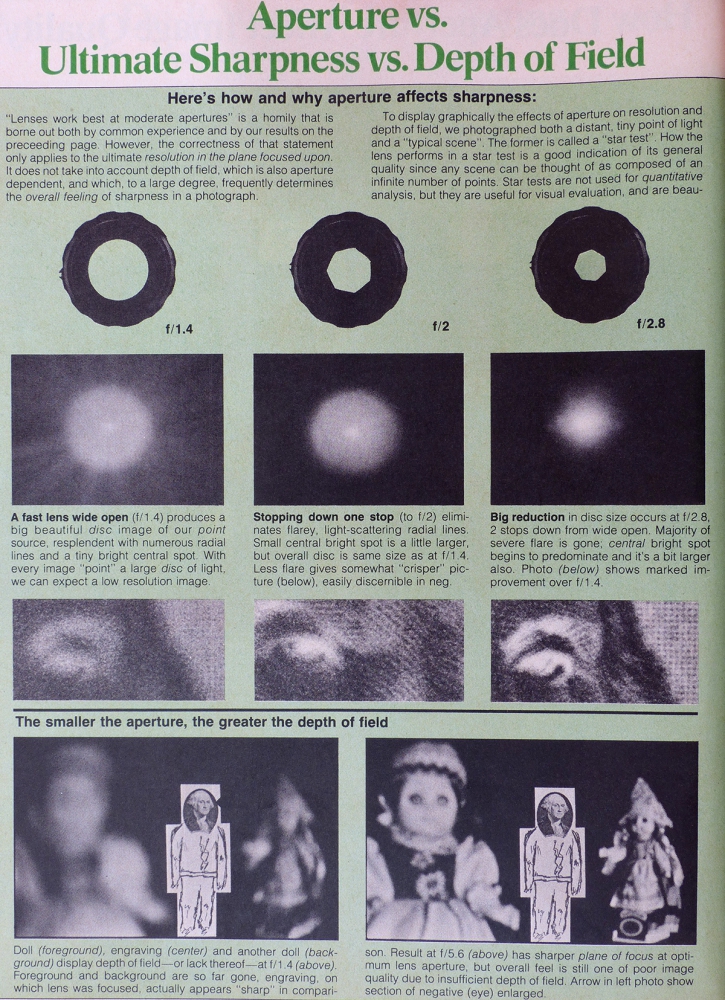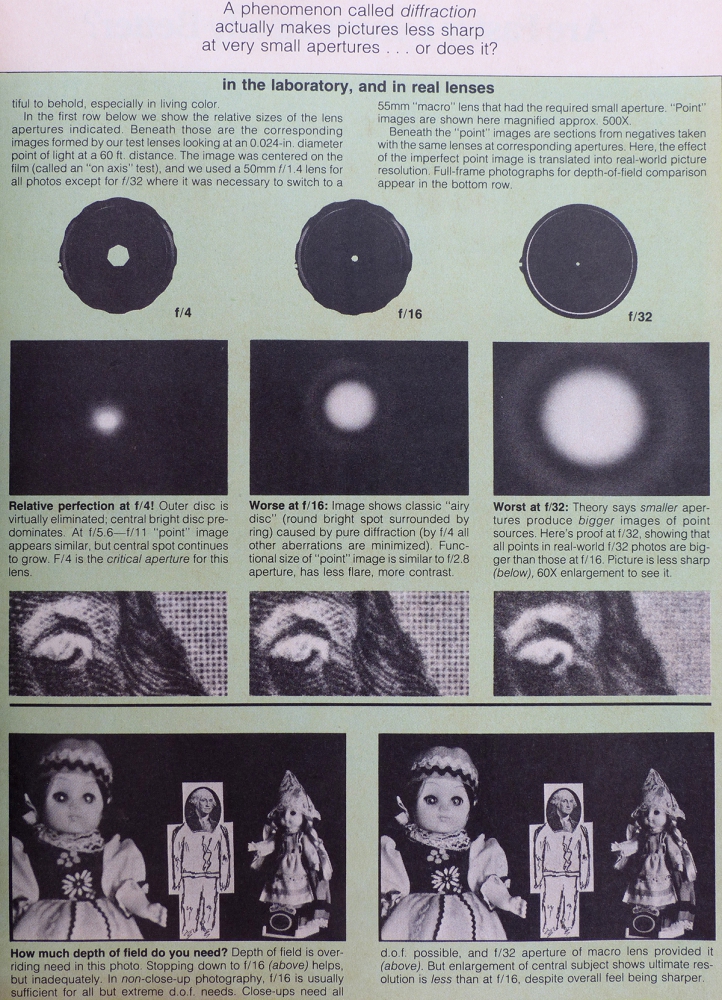 Posted: Fri Apr 11, 2014 2:05 pm Post subject: LENSES: Facts and Fallacies - Part III Posted: Fri Apr 11, 2014 2:05 pm Post subject: LENSES: Facts and Fallacies - Part III |
 |
|
Gerald wrote:
The author of the article examines here the behavior of a lens from a microscopic point of view. The fundamental idea is that if you know how a lens "responds" to a point of light (an "star"), you know all that is needed to determine how the image of a real scene would be: simply decompose the scene to be photographed into a collection of points of light, and add the lens' "responses" to each point to form the image of the scene.
The article shows the microscopic images of focused stars in the center of the field. What is not shown is what would be the images of an off-center star, when aberrations like coma, astigmatism, oblique spherical and lateral chromatic, further increase the size of the blur.
Note that images shown are of a "corrected" lens. Since the nineteenth century, almost all photographic lenses are more or less well corrected from aberrations. Unfortunately, in practice the correction is never complete. To be exact, the pictures in the article show not the effect of the aberrations, but the effect of the residual aberrations.
Finally, the article discusses the effect of diffraction, a phenomenon that occurs at any aperture. The resolution of an ideal lens without aberrations is limited only by diffraction. An ideal lens has maximum resolution wide open.
 [/url [/url
[url=http://forum.mflenses.com/userpix/20173/big_8001_P6_1.jpg]
to be continued...
_________________
If raindrops were perfect lenses, the rainbow did not exist. |
